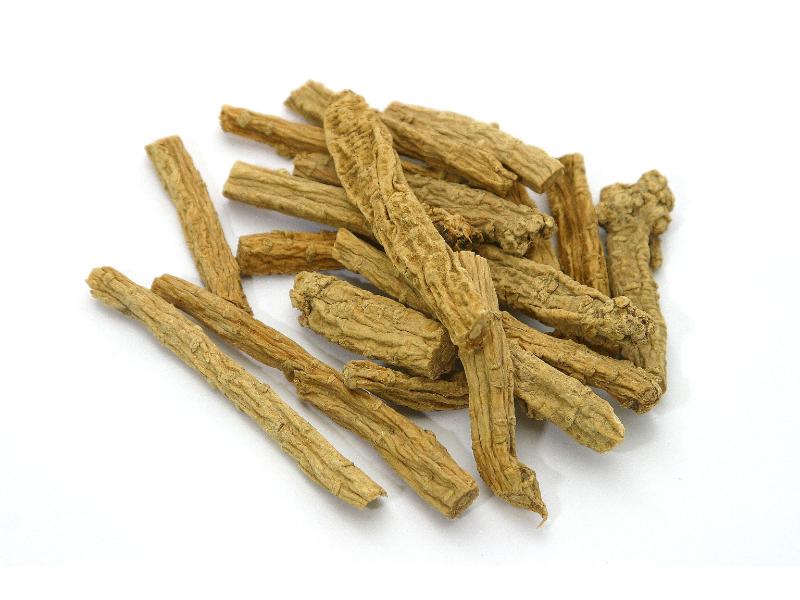Search in medicinals
Codonopsis Radix
Codonopsis [root]
党参 〔黨參〕 dǎng shēn

Alternate Chinese names: 上党人参 shàng dǎng rén shēn; 黄参 huáng shēn; 狮头参 shī tóu shēn; 中灵草 zhōng líng cǎo; 防党 fáng dǎng
Kingdom: Plant
Origin in PRC Pharmacopoeia: Codonopsis pilosula (Franch.) Nannf.; Codonopsis pilosula Nannf. var. modesta (Nannf.) L.T. Shen; Codonopsis tangshen Oliv. (PRC Pharmacopoeia)
Origin in unofficial sources: Codonopsis pilosula (Franch.) Nannf.*; Codonopsis tubulosa Kom.; Codonopsis viridiflora Maxim; Codonopsis tsinlingensis Pax. et K. Hoffm.; Codonopsis clematidea (Schrenk.) Clarke; Codonopsis nervosa (Chipp.) Nannf.; Codonopsis tangshen Oliv.*; Codonopsis pilosula Nannf. var. modesta (Nannf.) L.T. Shen*
Use: Medicinal
Category: Supplementing agents / Qì-supplementing agents
Properties: Sweet; balanced.
Channel entry: Spleen, lung channels.
Actions and indications:
- Supplements spleen and lung qì: Spleen and lung qì vacuity patterns.
- Engenders liquid: Febrile disease damaging liquid, with shortness of breath and thirst.
- Nourishes blood: Blood vacuity patterns.
- Additional uses: Dǎng shēn is used to support right qì in patterns of
right qì vacuity with either internal repletion or external contraction. For internal repletion withright qì vacuity , it is combined with downward-draining medicinals such as Dà huáng (大黄 Rhei Radix et Rhizoma, rhubarb) and Máng xiāo (芒硝 Natrii Sulfas , mirabilite). For external contraction with right vacuity, it is combined with exterior-resolving agents, such as Zǐ sū yè (紫苏叶 Perillae Folium, perilla leaf).
Dosage and method: Oral: 10–30g in decoctions. Also used in powders and pills.
Warnings: Not to be used alone in heat patterns.
Product description: The roots are cylindrical, though have sometimes been flattened. They are roughly 1.5 cm thick and may be up to 30 cm long. The outer surface is an earth brown or dark brown and bears irregular deep furrows. The head of the root bears the dense scars left by the stalk and shoots, and close to the head are dense transverse creases that grow scarcer further down. The roots often have breaks in the skin. They are light and supple, and snap with difficulty to reveal a rough fracture that is whitish in color. They are cut into fine transverse or oblique slices, or into sections that are then sliced lengthwise. The skin accounts for the greater part of the cross section. Slices that are stir-fried in earth are golden brown.
Quality: The best roots are clean, long, and of even thickness and are sweet to the taste. The heads should be small and the skin a light, fresh color.
Production area: Codonopsis pilosula: Eastern codonopsis comes from Manchuria, Western codonopsis from Shǎnxī (Shaanxi) and Gānsū, and Lù'ān codoponsis from Shānxī (Lù'ān County). Sìchuān codonopsis (Codonopsis tangshen) comes from Sìchuān and Húběi.
Etymology: Dǎng shēn 党参 is so named because it is originally said to have come from Shàngdǎng 上党 and is similar in action to ginseng (rén shēn 人参).
Back to search result Previous Next